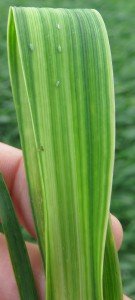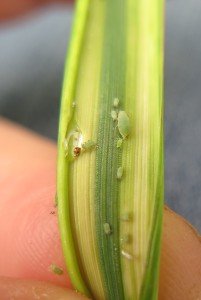Key points
- Conditions suitable for the usual cereal aphid species will also be suitable for RWA. Aphid populations typically build rapidly in late July and August.
- Do not assume aphids in cereals are just the usual oat and corn aphid. In the event of a Russian wheat aphid (RWA) infestation, early detection in spring is critical to prevent yield loss.
- Multiple aphid species may occur in the same crop.
- Familiarise yourself with the symptoms of RWA infection. These may be the first things you notice in a crop.
- Report suspect aphid incidence. contact details provided at the end of the post.
Leaf symptoms caused by RWA feeding
Watch a video on detecting RWA in the field
RWA induce striking symptoms in wheat and barley, unlike the oat and corn aphid which produce no obvious symptoms. RWA do not infest broadleaf crops. Plant damage is in response to direct aphid feeding, so only the infested leaves and/or tillers show symptoms, which usually appear within a week of infestation.
1. White streaking of the leaves. Some varieties show reddening.
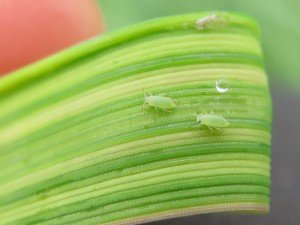

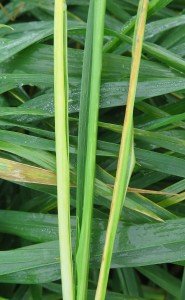
3. Infestation up to head emergence can cause rolling of the flag leaf, resulting in the head being trapped in the boot.
Some of these symptoms are similar to those caused by wheat streak mosaic virus (WSMV) and phenoxy damage in cereals. Close examination of symptomatic plants to determine the presence of RWA is recommended.
Sampling strategy
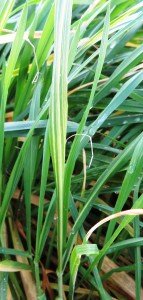
Sample tillers randomly from across the field. At low density, there may be just a affected tiller on a plant, and can be difficult to see in a big crop.
It is not known whether RWA infestations will display the edge effect often seen with other aphids (densities are highest around field edges where the aphids have moved in from nearby hosts, or been concentrated by movement on prevailing winds). A random sampling approach provides the best chance of encountering a patchy pest like RWA.
Aphid identification
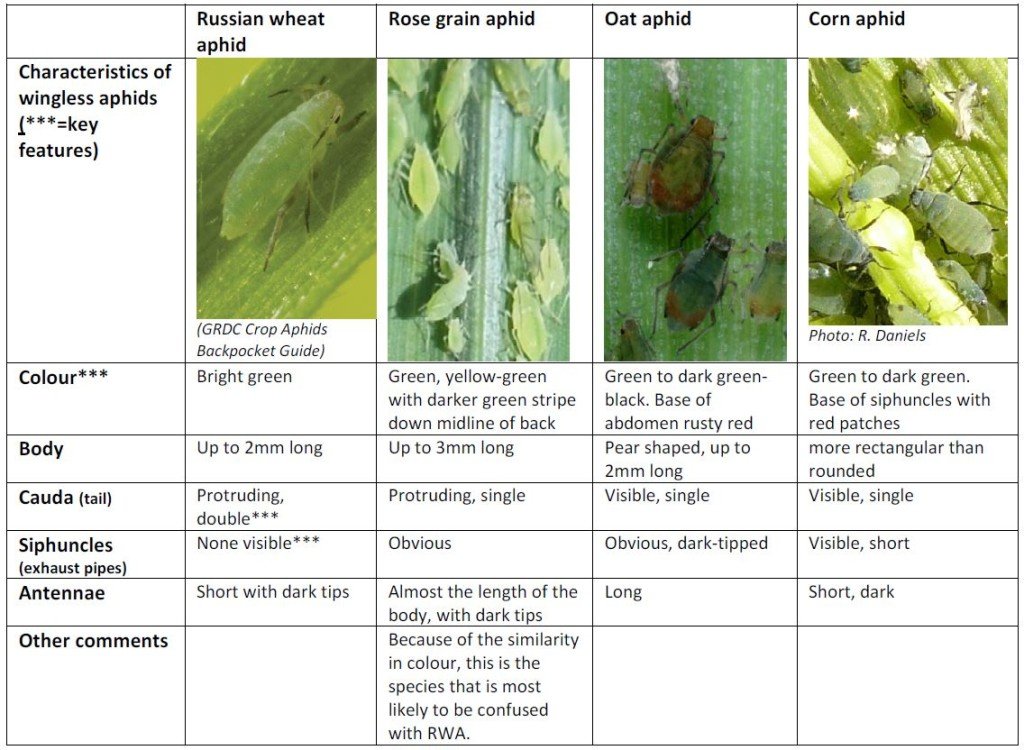
If RWA are detected in crops in NSW or Queensland, notify the relevant authority. Until the first confirmed detections in these states, RWA is a notifiable pest. No detections confirmed at 20 July, 2016.
Queensland Reports to Biosecurity Queensland on 13 25 23 or email photos of symptoms/aphids to [email protected].
New South Wales Exotic Plant Pest Hotline 1800 084 881 or reports are requested using the online RWA Reporting Tool
National Exotic Plant Pest Hotline 1800 084 881 – calls to the Hotline are transferred to contact points in each jurisdiction
Aphid identification resources:
• GRDC Crop Aphid Backpocket Guide
• I Spy – Insects of Southern Australian Broadacre Farming Systems Identification Manual (available for download or hardcopy purchase)

